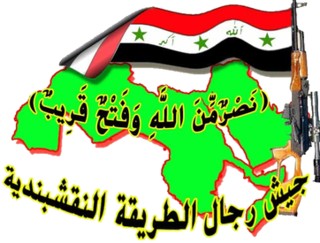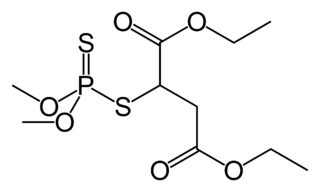
A weapon of mass destruction (WMD) is a nuclear, radiological, chemical, biological, or any other weapon that can kill and bring significant harm to a large number of humans or cause great damage to human-made structures, natural structures, or the biosphere. The scope and usage of the term has evolved and been disputed, often signifying more politically than technically. Originally coined in reference to aerial bombing with chemical explosives during World War II, it has later come to refer to large-scale weaponry of other technologies, such as chemical, biological, radiological, or nuclear.

Iraq actively researched and later employed weapons of mass destruction from 1962 to 1991, when it destroyed its chemical weapons stockpile and halted its biological and nuclear weapon programs. The fifth president of Iraq, Saddam Hussein, was internationally condemned for his use of chemical weapons during the 1980s campaign against Iranian and Kurdish civilians during and after the Iran–Iraq War. In the 1980s, Saddam pursued an extensive biological weapons program and a nuclear weapons program, though no nuclear bomb was built. After the Persian Gulf War (1990-1991), the United Nations located and destroyed large quantities of Iraqi chemical weapons and related equipment and materials, and Iraq ceased both its chemical, biological and nuclear programs.

The Iraq Survey Group (ISG) was a fact-finding mission sent by the multinational force in Iraq after the 2003 invasion of Iraq to find the weapons of mass destruction alleged to be possessed by Iraq that had been the main ostensible reason for the invasion. Its final report, Comprehensive Report of the Special Advisor to the Director of Central Intelligence on Iraq WMD, was submitted to Congress and the president in 2004. It consisted of a 1,400-member international team organized by the Pentagon and Central Intelligence Agency to hunt for the alleged stockpiles of weapons of mass destruction, including chemical and biological agents, and any supporting research programs and infrastructure that could be used to develop WMD. The report acknowledged that only small stockpiles of chemical WMDs were found, the numbers being inadequate to pose a militarily significant threat.

David A. Kay is a weapons expert, political commentator, and senior fellow at the Potomac Institute for Policy Studies. He is best known for his time as United Nations Chief Weapons Inspector following the first Gulf War and for leading of the Iraq Survey Group's search for weapons of mass destruction following the 2003 invasion of Iraq. Upon presentation of the Group's finding that there had been significant errors in pre-war intelligence concerning Iraq's weapons programs, Kay resigned. The ensuing controversy served as impetus for the formation of the Iraq Intelligence Commission.
Cyclosarin or GF is an extremely toxic substance used as a chemical weapon. It is a member of the G-series family of nerve agents, a group of chemical weapons discovered and synthesized by a German team led by Dr. Gerhard Schrader. The major nerve gases are the G agents, sarin (GB), soman (GD), tabun (GA), and the V agents such as VX. The original agent, tabun, was discovered in Germany in 1936 in the process of work on organophosphorus insecticides. Next came sarin, soman and finally the most toxic, cyclosarin, a product of commercial insecticide laboratories prior to World War II.

Many nations continue to research and/or stockpile chemical weapon agents despite numerous efforts to reduce or eliminate them. Most states have joined the Chemical Weapons Convention, which required the destruction of all chemical weapons by 2012. Twelve nations have declared chemical weapons production facilities and six nations have declared stockpiles of chemical weapons. All of the declared production facilities have been destroyed or converted to civilian use after the treaty went into force. According to the United States government, at least 17 nations currently have active chemical weapons programs.

Although Germany has the technical capability to produce weapons of mass destruction, since World War II it has generally refrained from producing those weapons. However, Germany participates in the NATO nuclear weapons sharing arrangements and trains for delivering United States nuclear weapons.

WMD conjecture in the aftermath of the 2003 invasion of Iraq concerns the immediate reactions and consequences to the failure by the United Nations Monitoring, Verification and Inspection Commission (UNMOVIC) and the U.S.-led Iraq Survey Group (ISG) to find the alleged stockpiles of weapons of mass destruction during and after 2003 invasion of Iraq. The United States effectively terminated the search effort for unconventional weaponry in January 2005, and the Iraq Intelligence Commission concluded that the judgements of the U.S. intelligence community about the continued existence of weapons of mass destruction and an associated military program were wrong. The official findings by the CIA in October 2004 were that Iraqi leader Saddam Hussein "did not possess stockpiles of illicit weapons at the time of the U.S. invasion in March 2003 and had not begun any program to produce them."
Jeish Muhammad is an Iraqi militant group that is both politically and religiously motivated. The politically motivated faction within JM is primarily made up of former Ba'athist members mainly from the Sunni region. Many who enjoyed special status during the leadership of Saddam Hussein were from Tikrit, which is in turn within an area of Iraq where the Arab population is mostly Sunni. People who generally hold the ex-vice-president, Izzat Ibrahim ad-Douri, in exceptionally high esteem were members of the security, intelligence and police forces from the previous government.
In violation of the Geneva Protocol of 1925, the Iraqi Army initiated two failed and one successful (1978–1991) offensive chemical weapons (CW) programs. President Saddam Hussein (1937–2006) pursued the most extensive chemical program during the Iran–Iraq War (1980–1988), when he waged chemical warfare against his foe. He also used chemicals in 1988 in the Al-Anfal Campaign against his civilian Kurdish population and during a popular uprising in the south in 1991.

Libya pursued programs to develop or acquire weapons of mass destruction from when Muammar Gaddafi seized control of Libya in 1969 until he announced on 19 December 2003 that Libya would voluntarily eliminate all materials, equipment and programs that could lead to internationally proscribed weapons, including weapons of mass destruction and long-range ballistic missiles. Libya under King Idris signed the Nuclear Non-Proliferation Treaty (NPT) in 1968 and Gaddafi ratified it in 1975, and concluded a safeguards agreement with the International Atomic Energy Agency (IAEA) in 1980. The United States and the United Kingdom assisted Libya in removing equipment and material from its nuclear weapons program, with independent verification by IAEA.

The combatants of the Iraq War include the Multinational Force in Iraq and armed Iraqi insurgent groups. Below is a list of armed groups or combatants that participated in the Iraq War of 2003-2011.

A chemical weapon (CW) is a specialized munition that uses chemicals formulated to inflict death or harm on humans. According to the Organisation for the Prohibition of Chemical Weapons (OPCW), "the term chemical weapon may also be applied to any toxic chemical or its precursor that can cause death, injury, temporary incapacitation or sensory irritation through its chemical action. Munitions or other delivery devices designed to deliver chemical weapons, whether filled or unfilled, are also considered weapons themselves."

The Army of the Men of the Naqshbandi Order, also called the Naqshbandi Army, is one of a number of underground Ba'athist and Sufi militant insurgency groups in Iraq. Media frequently refers to the group by the initials JRTN, a romanization of its Arabic name. Supreme Command for Jihad and Liberation, technically the name of the umbrella organisation to which JRTN belongs, is also often used to refer to JRTN specifically.

Muthanna State Establishment was Iraq's main chemical weapons research, development, and production facility. It is located in Saladin Governorate 40 km south west of Samarra, 140 km north west of Baghdad. This mega facility covering an area 100 km², contained three main production areas.
















